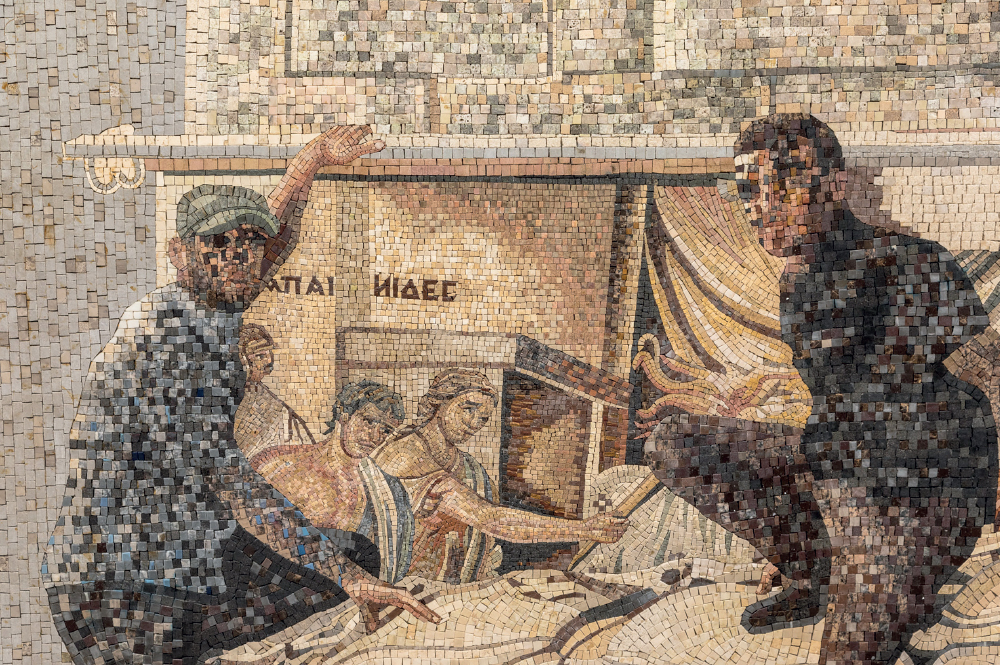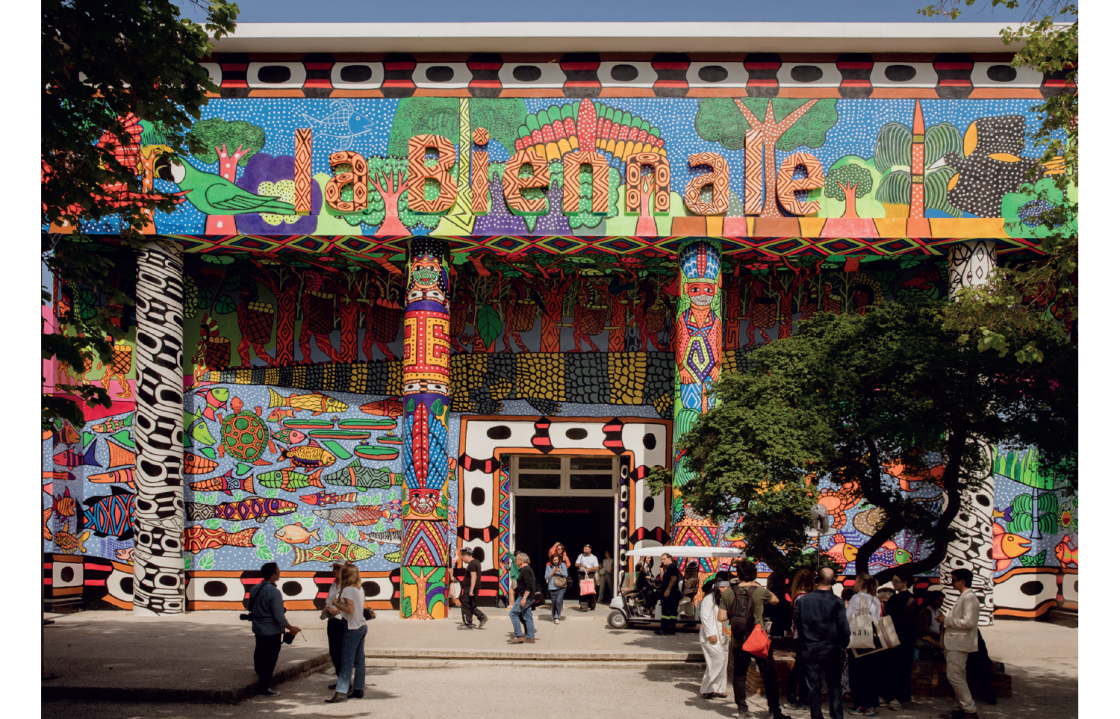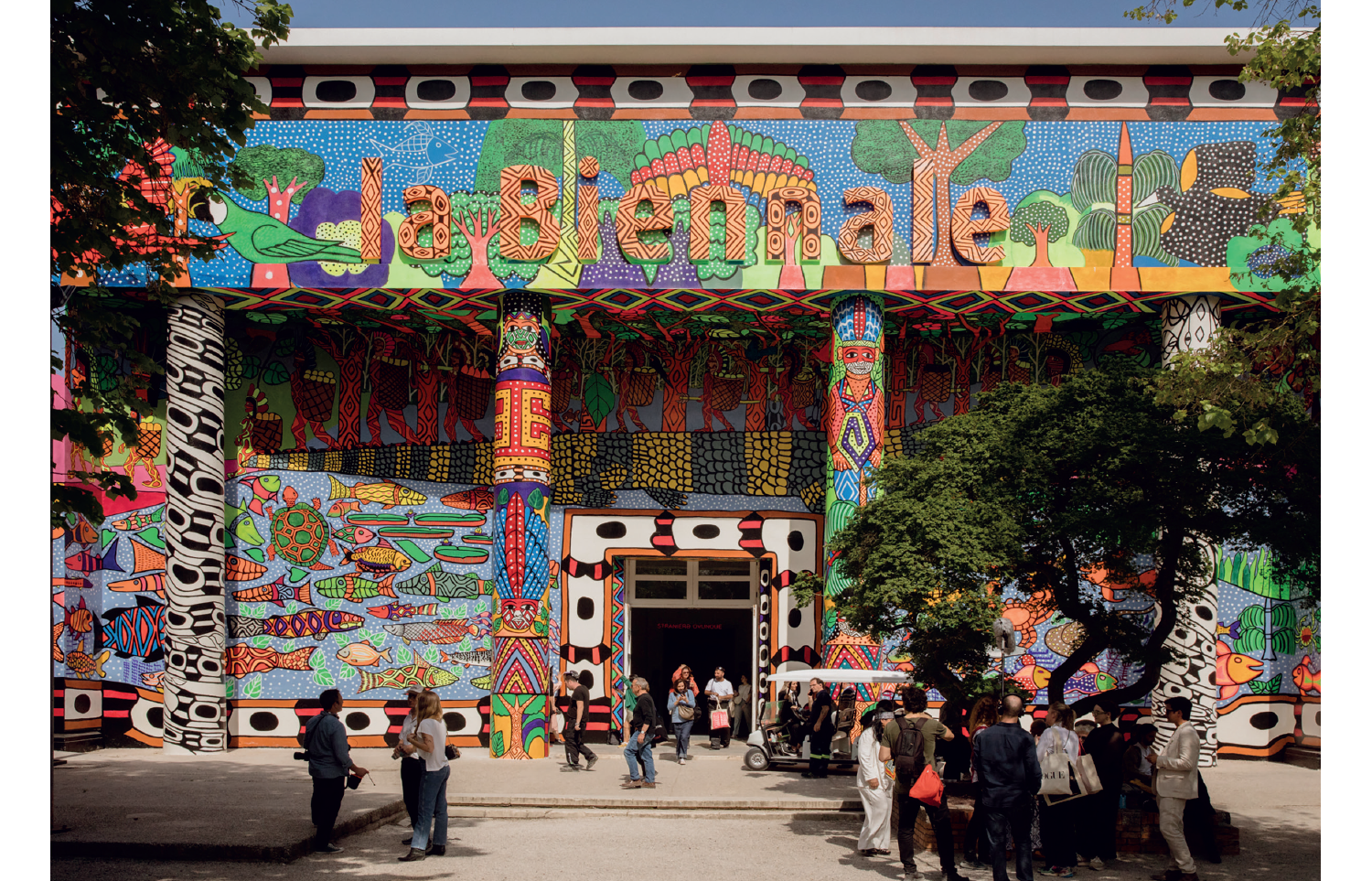Last week’s opening of the 60th edition of the Venice Biennale marks a watershed for the art world. In much of the festival’s gigantic central exhibition, curated by the Brazilian museum director Adriano Pedrosa, as well as in many of the dozens of independently organised national pavilions and countless collateral events, it more obviously than ever before didn’t so much matter what was on show, but why. The politics of visibility and representation has been eating away at the arts for at least a decade, most recently under the banner of ‘decolonisation’. The now nearly complete abdication of aesthetic criteria in favour of a decolonial organising principle is here finally exposed as a wholly inadequate rationale for presenting contemporary art.
Art will allow the exoticisation of foreigners – if you cloak it in faux concern with migration
Foreigners Everywhere, the title of Pedrosa’s project, encapsulates this failing proposition. The cheap pun greets visitors in multilingual neon at the exhibition’s entrance (a 2004 work by the artist duo Claire Fontaine). The slogan is a familiar old trick. It proves that the art world will happily allow the exoticisation of foreigners – as long as you cloak it in faux concern with migration and a pro-globalisation outlook.
Pedrosa’s ostensible goal is far more high-minded: he wants to reclaim ‘foreignness’ in order to rewrite the cultural canon. To be a stranger, he proclaims, is fundamental to the human condition. In his taxonomy, migrants are foreigners; queers are foreigners; indigenous peoples are foreigners; non-artists are foreigners; uncelebrated dead Italian emigré artists are foreigners… He wants to inspire solidarity between these groups. Good luck to him.
Of the more than 300 artists included, many are new to the biennale circuit and half are connected to the Global South. Most have no interest in the contemporary. In fact, this is what’s most striking about the exhibition, and many might say it’s welcome: its penchant for unflashy 20th-century artistic forms – such as the numerous textile hangings – and a lack of interest in the political aesthetic characteristic of today’s global art. But there is a disconnect here: the show makes few overt references to today’s pressing topics, yet out in the ‘real world’ – where the continued existence of the Israeli pavilion was being met with mass protests – artists are talking about little else.
The logic of the show is that all art has the same value. This explains the inclusion of naive paintings such as those by Rosa Elena Curruchich, which document community life during the Guatemalan civil war. But what is the purpose of showing such folk artefacts in the world’s most significant art exhibition when Massimiliano Gioni’s 2013 Biennale – which explicitly focussed on outsider artists – failed to inspire any earnest interest in these kinds of practices? In Venice’s high-art context, Curruchich’s paintings, and multiple works like hers, are easily overlooked as ‘mere’ folk art. To appreciate them, or even differentiate between them, you have to study the wall texts which brim with unconvincing taxonomical detail. A game of bingo suggests itself in which an artwork that meets all of Pedrosa’s criteria for foreignness wins ‘house’.
Pedrosa’s tell-not-show mode of display is destabilising to the senses – maybe intentionally so. But it’s also destabilising to our idea of quality. More than a handful of works are highly questionable, which inescapably reveals the poverty of his method. The section showcasing migrant Italians, for example, includes a painting of… an armchair. Linda Kohen’s banal 1999 work is included not for its aesthetic merits but because the Jewish artist fled Milan in 1939. If the message of this artistic detritus is that anyone can become an artist if they can become a refugee, art has no further function.
With such anti-aestheticism, Pedrosa’s grand atlas announces the end of contemporary art as we understand it. Contemporary art described the evolution of mostly western artistic practices since around 1960, and their global spread, which followed a suspiciously narrow range of political and aesthetic concerns aligned with US and European interests. The project of ‘decolonisation’, then, which underlies Pedrosa’s exhibition and is the global art world’s current critical preoccupation, must logically demand that no particular aesthetic or politics takes dominance over any other.
The logic of this show is that all art has the same value
Contemporary art thus becomes obsolete. Good news, many will say. But only in principle because nobody seriously believes in an anything-goes approach. Pedrosa’s pseudo-democratic curating is therefore just a symptom of the art world’s ideological stalemate. In Foreigners Everywhere, in which half of the artists are dead or not politically minded, the tension is easy to conceal.
How contemporary art’s passing may play out at large is much more visible in many of the national contributions to the Biennale. Even though nearly every pavilion name-checks decolonisation (Brazil, Australia, the US, the Netherlands and multiple others use their pavilions to showcase practices rooted in indigenous cultures) their contrasting approaches mark a splitting point for global art.
One direction is exemplified by Denmark which renamed its pavilion Kalaallit Nunaat, the inuit name for Greenland. The photographic display by Inuuteq Storch documents local life in what could be classed as autoethnography. Certainly, the indigenous sensibility is likely to have had aesthetic roots that have little to do with contemporary art.
Brazil’s exhibition Ka’a Puera by the indigenous artist Gliceria Tupinamba plays with the symbolism of the capoeira bird. Such work demands the development of an aesthetic apparatus that does not reduce it to ethnic curio or commodify it as trophy art-world trinket. But there’s no certainty that the kind of aesthetic approach required to appreciate work like this will ever be compatible with contemporary art.
The Native-American artist Jeffrey Gibson’s US pavilion, meanwhile, mixes strands of low queer culture with pseudo-liberatory political sloganeering in what resembles a children’s soft-play area. Such self-satisfied nonsense is at least on-brand for the country’s cultural diplomacy.
John Akomfrah’s presentation in the British Pavillion is a career-crowning work
John Akomfrah’s presentation in the British Pavilion encapsulates the aesthetic dilemma of making art under such conditions. Listening All Night To The Rain is an engrossing video installation of some thirty interlinked films and dozens of hours of footage. It brings together disparate but subtly interwoven themes: of exile, the passage of time, migration, the flow of water. Akomfrah poses anorak-clad figures on sea breakers and arranges record players and metronomes among tropical fruit. These are gently seductive, gently unnerving images. It’s a career-crowning work. It is severely undermined, however, by a heavy-handed curatorial text which reads like a corporate statement by the exhibition’s commissioner, the British Council. It precludes any ideologically non-compliant reading of the artist’s already politically and theoretically informed visuals, thus throwing their quality into doubt.

Thankfully, a handful of presentations deftly play with the spent ideological slogans and quietly salvage contemporary art from the ruins of this edition. Take a look at the subtle mosaics of Lebanese artist Omar Mismar, for example (see above). Mismar’s mourning over the destruction of Syria’s heritage outsmarts Pedrosa’s edicts by animating material history without turning it into a rationalisation for identitarian theory. Or head to the first-ever Ethiopian pavilion. Here, the painter Tesfaye Urgessa portrays groups of people both enveloped and emboldened by history, naked but protected by symbols of tradition and knowledge. Curated by the poet Lemn Sissay, the show deploys old ethnographic tropes to at once critique and profit from them. In this ideologically and aesthetically bankrupt Biennale, these spirited gestures are as necessary as air.








Comments